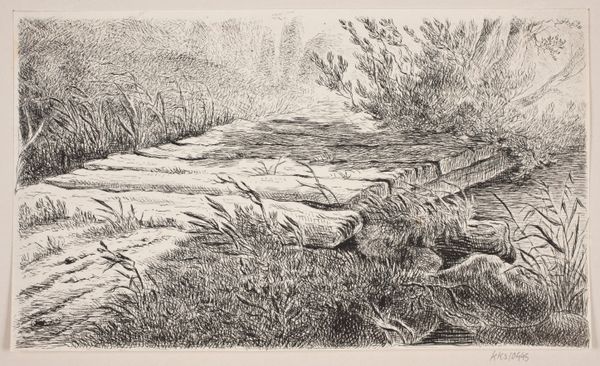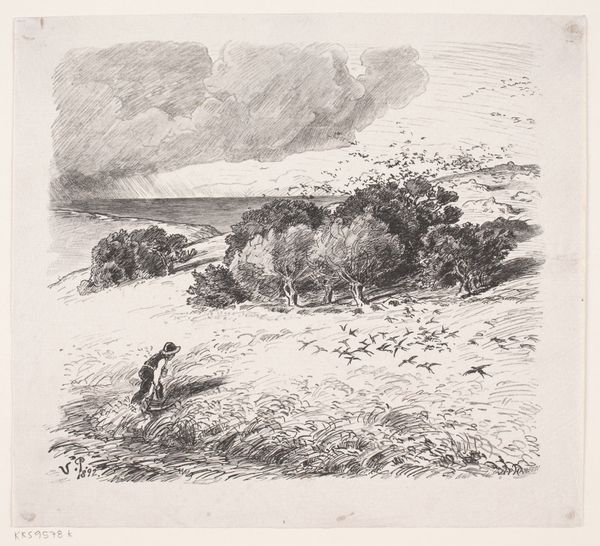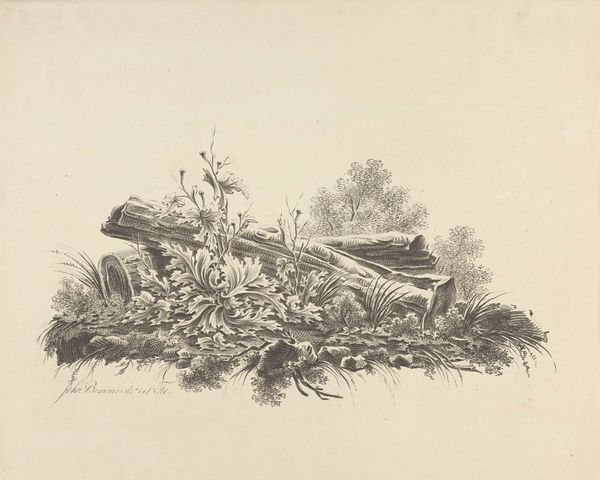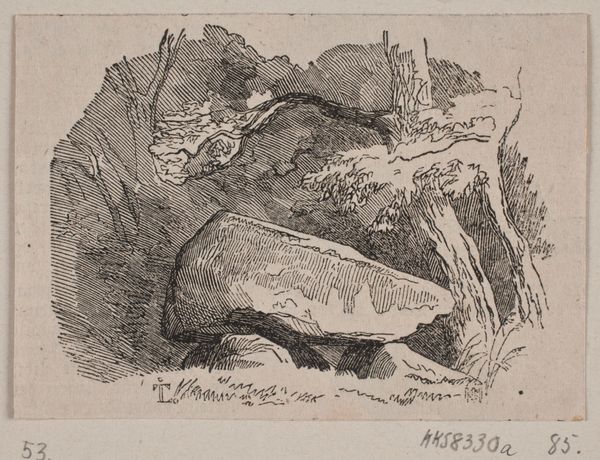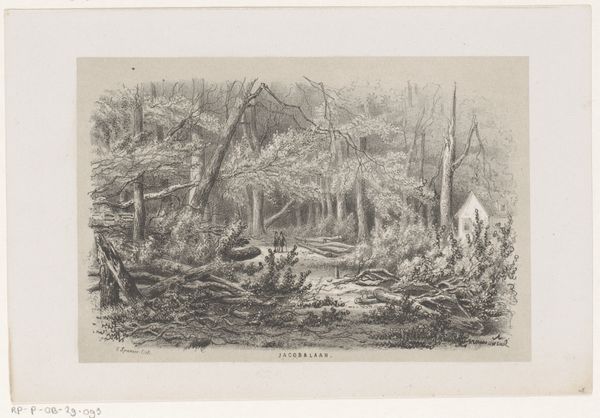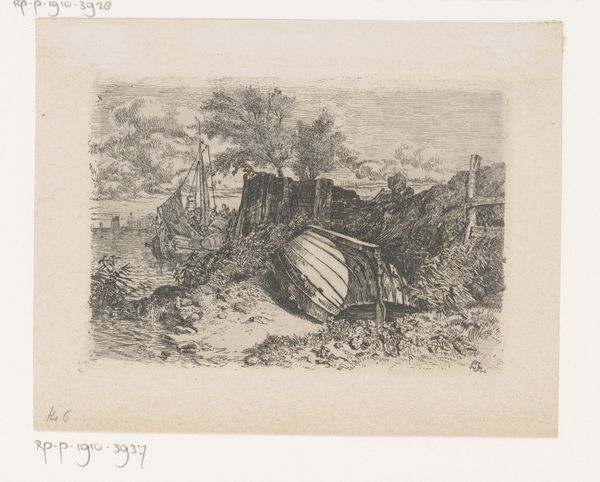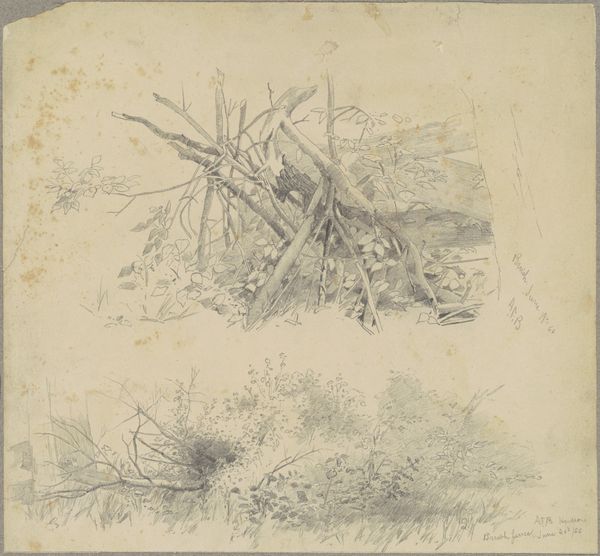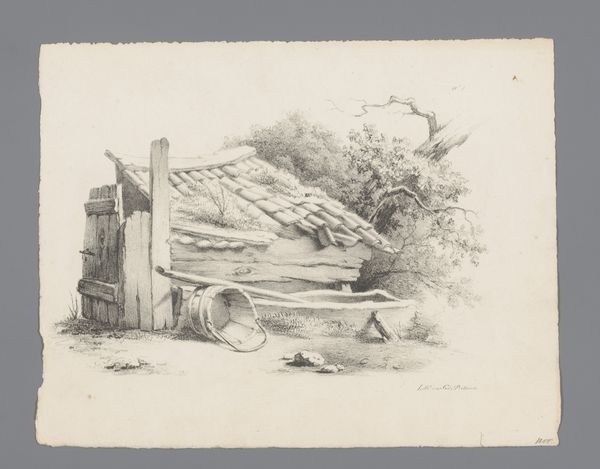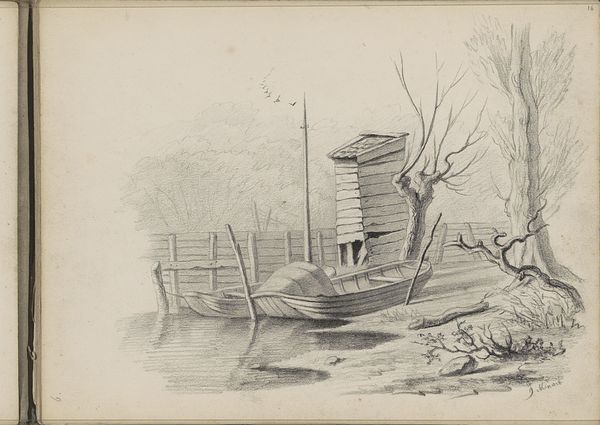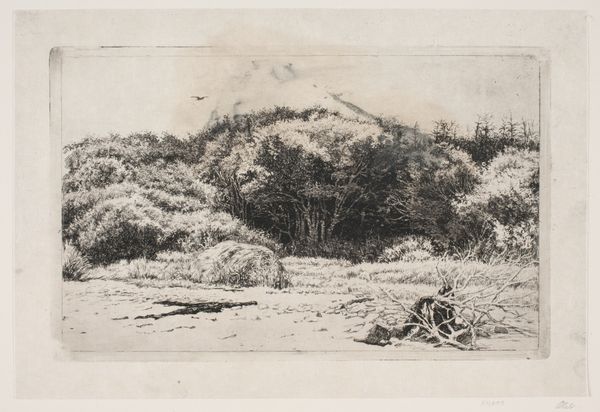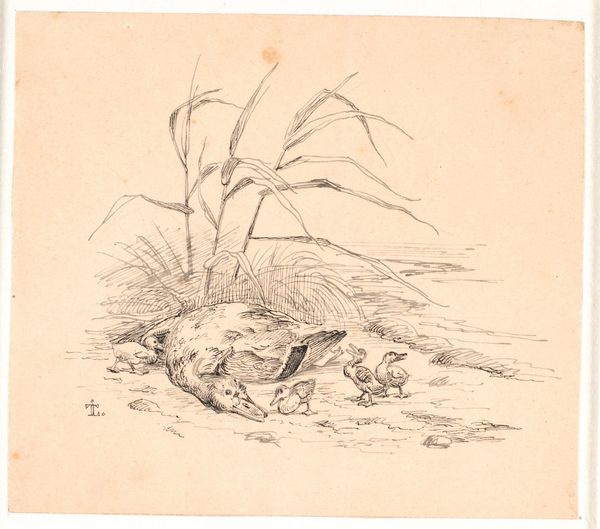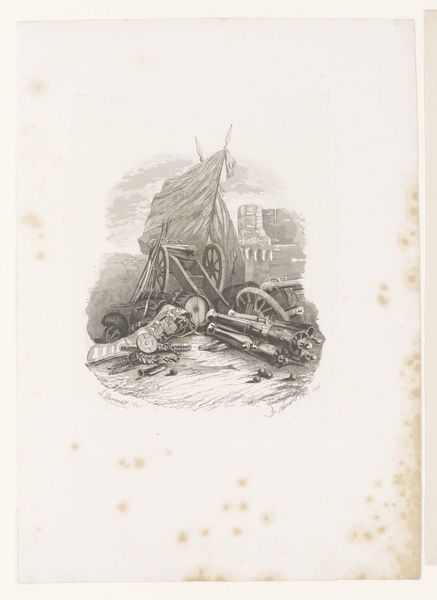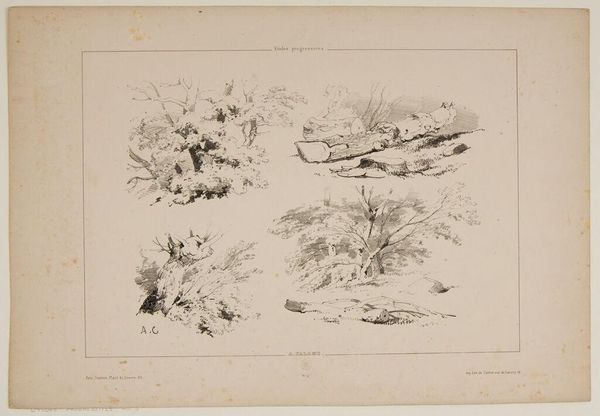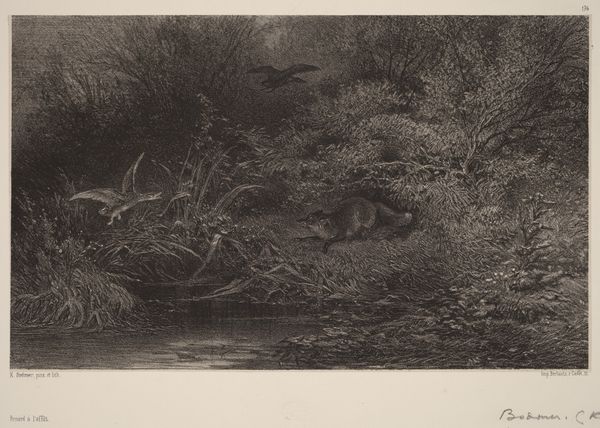
print, etching, woodcut
# print
#
etching
#
landscape
#
etching
#
woodcut
Dimensions: 76 mm (height) x 108 mm (width) (bladmaal)
Curator: Here we have Andreas Flinch’s “Den væltede bikube,” or “The Overturned Beehive,” created in 1841. It’s a lovely etching. Editor: Oh, it’s like a quiet scene from a storybook. It’s charmingly bleak and somehow very cozy, even though it depicts something overturned. I feel this rustic sadness radiating out of it. Curator: It's interesting that you pick up on the rustic quality. Printmaking in the 19th century, particularly etching, often served as a medium for circulating imagery related to rural life, labor, and, indeed, loss tied to those themes. We see a clear attention to the process of rendering these subjects through detailed cross-hatching that give the beehive and wooden poles so much volume. Editor: I agree. You can really appreciate the laborious etching work. It reminds me how delicate the materials used in beekeeping are - basket, thin rods, hemp cords - despite being exposed to some heavy-duty natural forces. The beehive lies forlorn on the forest floor; it must weigh so little to be blown away and reveal that dark interior! What a metaphor! Curator: Absolutely, and it challenges our ideas about art and craft, by highlighting labor and the handmade nature of the objects, as well as representing the environmental context of such industries and how print-making could be considered documentation in itself. Flinch uses an intaglio printmaking technique involving acid to corrode the lines, giving it a specific tone as he brings an attention to these objects’ texture. Editor: True, and there’s such tenderness in how he renders that twisted little rope near the basket rim. It’s almost portrait-like! One really thinks about all the work and skill it took to raise those bees. And the failure there. A failed bucolic fantasy. Curator: Yes, and also its wider resonance within systems of exchange. Printmaking allowed for a democratization of art, offering visual access and social critique to a broad audience regarding such subjects as labor practices. Editor: So, as an intimate, mass-produced object. What was lost and gained, material and information. Interesting... Well, it makes one consider the true cost, doesn't it? Curator: Indeed. It layers so much within its seemingly simple form.
Comments
No comments
Be the first to comment and join the conversation on the ultimate creative platform.

